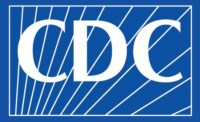The U.S. Centers of Disease Control and Prevention (CDC) reports infections from some foodborne germs increased in 2012 while others remain unchanged.
Presenting its yearly U.S. food safety report card, scientists on April 18 reported the latest statistics from the CDC’s FoodNet surveillance program which tracks nine infections commonly transmitted in food. In 2012, FoodNet identified nearly 19,531 infections, higher than the 19,000 it reported for 2011. Its latest survey tallied 4,563 hospitalizations and 68 deaths.
Infections from campylobacter — a pathogen linked to foods including produce, poultry and raw milk — increased 14% in 2012 compared to 2006-08 and is at its highest level since 2000. Salmonella remains the most commonly diagnosed infection, officials said.
Whether the increase stems from an actual increase in cases of contamination or from better surveillance and detection capabilities is unclear. Jeff Farrar, the U.S. Food and Drug Administration’s director of intergovernmental affairs and partnerships, said it isn’t clear what proportion of the Salmonella illnesses were caused by produce and said the findings highlight the importance of the new Food Safety Modernization Act’s rules which are in the process of being solidified.
“We don’t have that attribution data for all the commodities for all the pathogens,” Farrar said. “What we do know is the proposed produce safety rules proposes some pretty significant new standards on how we grow and harvest produce. We are confident once those rules are finalized and implemented, it will prevent a significant number of illnesses.”
View more information on the report.





